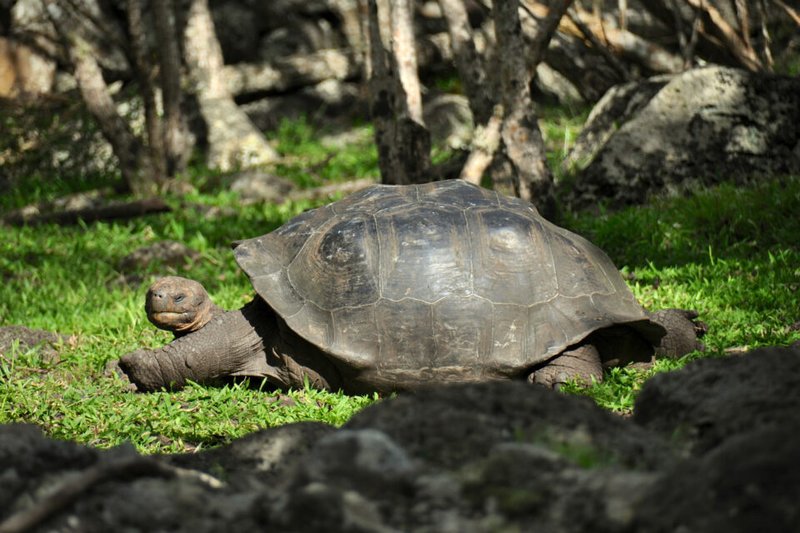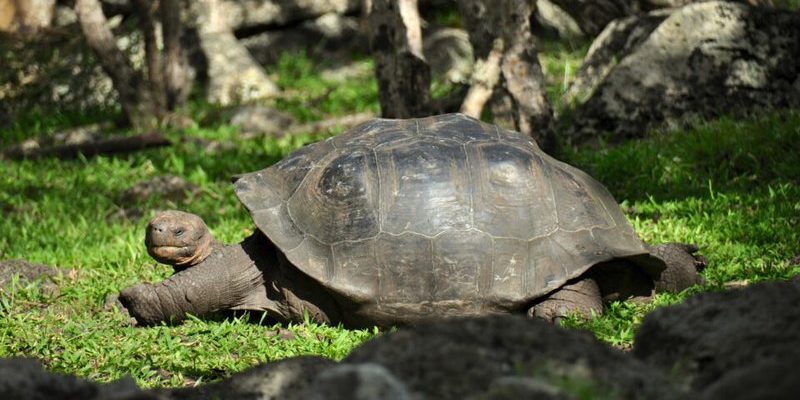
Now, you might be wondering what exactly makes the Galápagos tortoise such a tough survivor. From their impressive size to their unique ability to go long periods without food and water, these tortoises have developed some fascinating adaptations that help them thrive. Let’s dive into the incredible features that allow these gentle giants to maintain their status as one of nature’s remarkable survivors.
Size: A Key to Survival
One of the first things you’ll notice about the Galápagos tortoise is its size. With some individuals weighing as much as 700 pounds and reaching lengths of nearly five feet, their massive bodies play a vital role in their survival. Think about it: smaller animals must constantly be on the lookout for predators. But with their large size, Galápagos tortoises deter many potential threats.
Their bulk also allows them to store energy and hydrate. During the long dry seasons on the islands, they can go without food or water for months. This is because their size means they have a vast internal reservoir of resources. When water is scarce, they can rely on stored fat and fluid, which is crucial for survival in the fluctuating climates of the Galápagos.
Shell Shape: Nature’s Armor
Another fascinating aspect of the Galápagos tortoise is their unique shell shape. These tortoises come in different shapes depending on their habitat. For instance, those that live in arid areas have shell shapes that allow them to stretch their necks high to reach vegetation. Their domed shells provide a protective armor, similar to a tank, shielding them from the elements and predators.
Here’s the thing: the shell isn’t just for show. It’s made of a hard, keratin material that can withstand physical impacts. If a tortoise feels threatened, it can retreat into its shell, which serves as a formidable defense. In many ways, the shell is a perfect metaphor for resilience—protective, sturdy, and a key element in their survival strategy on the islands.
Long Lifespan: Patience as a Strategy
Galápagos tortoises have incredibly long lifespans, often living over 100 years, and some have been known to reach 177 years! You might wonder how this longevity plays into their survival. Well, a longer life allows them to adapt over time, learning from their environment and passing on vital information to younger generations.
Additionally, their longevity means they can reproduce for many decades. A single female can lay dozens of eggs each year, ensuring that even if some hatchlings don’t survive due to predators or environmental factors, enough will carry on the species. This slow and steady approach to survival highlights the balance between patience and persistence in nature.
Dietary Adaptations: Eating to Thrive
The Galápagos tortoise is predominantly herbivorous, munching on grasses, leaves, and fruits. You might be surprised to learn that they have developed unique adaptations to make the most out of limited food sources, especially during dry spells. For example, they have strong jaws and beaks, capable of crushing tough plant materials.
During droughts, their ability to conserve water becomes even more critical. They can extract moisture from the food they eat, allowing them to remain hydrated even when freshwater is scarce. Additionally, they can survive on a diverse diet, which gives them flexibility in what they consume. This adaptability allows them to thrive in changing conditions, continuing their survival story amid adversity.
Behavioral Adaptations: Social Strategies
Believe it or not, the Galápagos tortoise also exhibits some interesting behavioral adaptations. While they might seem solitary, these tortoises can display social interactions, especially during mating season. Interestingly, they often engage in vocalizations to communicate with one another.
During times of drought or food scarcity, their social strategies become even more apparent. Tortoises may group together, helping each other find food and water sources. They also exhibit a remarkable ability to navigate their environment. Using their strong memory—akin to a mental map—they can remember locations of food and water, which is essential for survival in such a rugged landscape.
Conservation Efforts: Protecting a Legacy
While the Galápagos tortoise has adapted brilliantly over the centuries, they face new threats today. Human activity and invasive species have led to a decline in their populations. To combat this, conservation efforts are underway, aimed at preserving their habitats and ensuring their survival.
Isn’t it heartening to see organizations and dedicated individuals working to protect these magnificent creatures? Efforts like breeding programs and habitat restoration are crucial here. By reducing human impact and controlling invasive species, we can create a safer environment for the tortoises to continue their remarkable journey on the islands.
The adaptations that make the Galápagos tortoise a survivor tell a powerful story of resilience. From their size and shell shape to their long lifespan and dietary habits, these creatures are a testament to nature’s ingenuity. As we learn more about them, we come to appreciate not only their incredible survival strategies but also the importance of protecting their delicate ecosystems.
In the grand scheme of things, the Galápagos tortoise symbolizes the balance of life—slow yet steady, with a pace that reminds us that patience can be a strength. Let’s support the conservation efforts to ensure that these gentle giants roam the Earth for many more generations. Every little bit helps, and who knows? Maybe one day, you’ll find yourself sharing a quiet moment with one of these ancient tortoises, appreciating the beauty of survival in its purest form.

